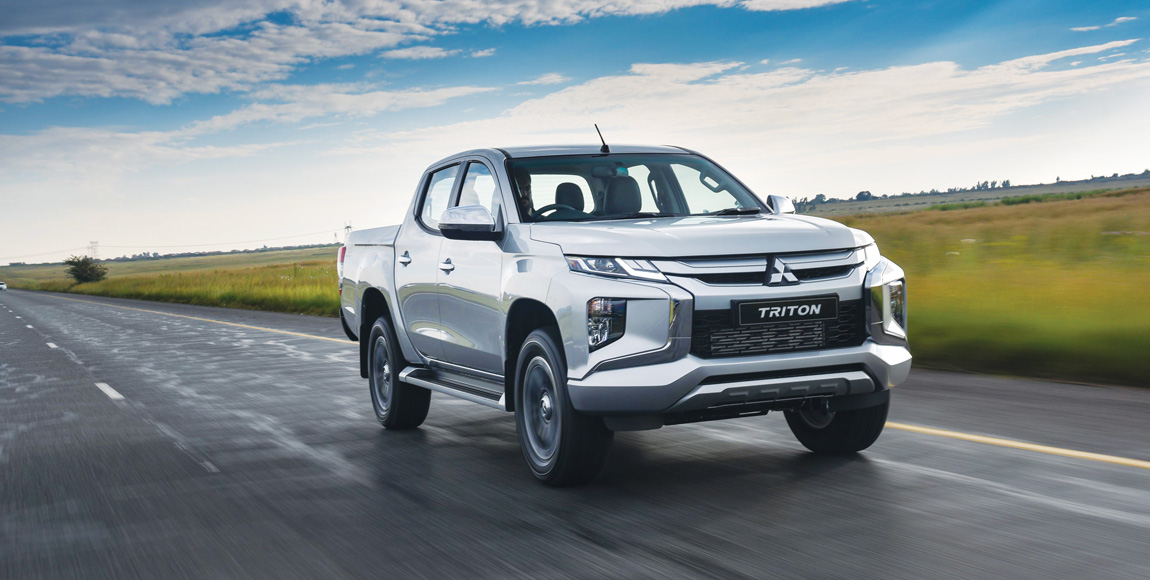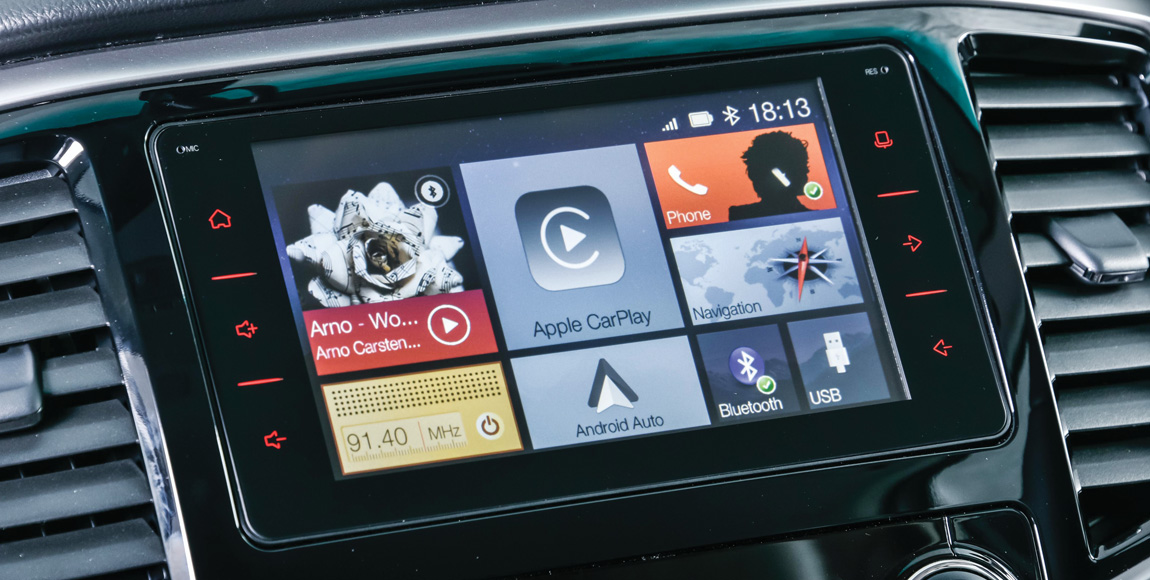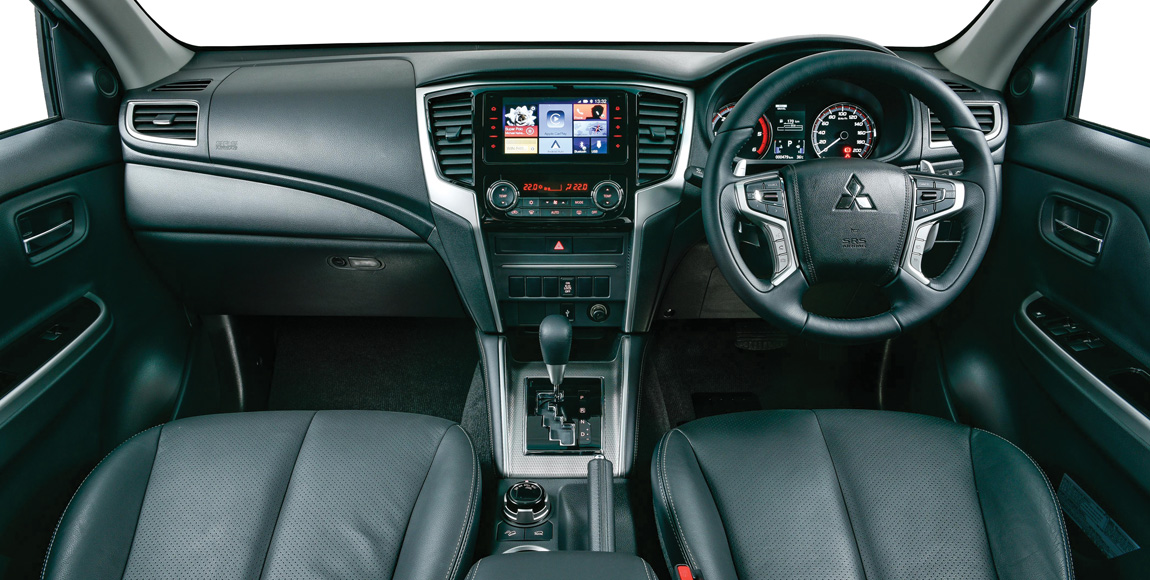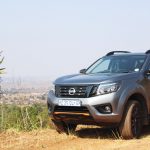Triton’s new message

Mitsubishi’s improved, fifth-generation Triton bakkie feels nearly as refined as a comfortable SUV and, for a pick-up, proves remarkably easy to manoeuvre – whether in town or when driving off-road. It boasts other attractive attributes, too. WYNTER MURDOCH reports.
Following hard in the wheel tracks of the newly launched Eclipse Cross SUV, Mitsubishi Motors South Africa recently unveiled locally its new Triton double-cab bakkie – the vehicle making its debut here less than six months after its international reveal.
The fifth-generation model – which celebrates 40 years of Mitsubishi bakkie production – is regarded as one of the most strategically important in the brand’s line-up and the latest version features a variety of styling, technology and engineering upgrades.
“The new, tough-looking Triton is significantly more competitive than its predecessor,” says Nic Campbell, GM of Mitsubishi Motors South Africa. “Its enhancements and refinements have been aimed at making it even more comfortable, durable and reliable than before.”
Though many of the changes are under the skin, the remade model features a new-look face that incorporates the latest iteration of the brand’s Dynamic Shield design concept. A high bonnet – underscored by imposing, swept back headlight clusters, large fog-light housings and a broad radiator grille – help to add visual width to the front end, aided by extended wheel-arch flares along the flanks, correspondingly styled crease lines on the doors and expansive running boards.
Similarly, the rear end has been styled to look broader than it is, with lighting clusters lapping the outside extremities of the bodywork and the beefy outline of the three-section bumper serving to emphasise width.

The visual tricks help to disguise the fact that the Triton is narrower than the majority of its competitors – it has a shorter wheelbase, too – but it’s my guess that you’d be hard-pressed to notice that fact unless the vehicle was parked alongside its rivals.
Incidentally, there are advantages to the model’s dimensions – its turning circle is around 11,5 m, making it almost car-like to manoeuvre in parking lots, a trait not usually associated with bakkies. Also, its less extensive dimensions help it to cope well in off-road situations when negotiating tight tracks. And, though its cabin is snug, the interior retains an airy, accommodating feel.
To add appeal to the range, three new colours have been introduced – Sunflare Orange, Diamond White Metallic and Graphite Grey Metallic. Further, hydraulic dampers have been added to the tailgate’s hinging mechanism to automatically control its rate of descent on opening – an innovative, handy feature that takes the strain out of having to manhandle a weighty slab of metal.
The enhanced Super Select II four-wheel-drive system – tested on a track that included deep axle twisters, steep inclines and descents, mud, rock and gravel – shows good traction capability, while a new, six-speed automatic gearbox impresses for its well-spaced cogs and smooth gear changes.
Though the engine remains unchanged, it appears well-suited to the new vehicle – the diesel-fed, four-cylinder, turbocharged, intercooled, 2,4-litre MIVEC unit delivering 133 kW and 430 Nm.

During a drive on a 300-km route that included plenty of low-range activity; long gravel sections tackled in four-wheel high-range; as well as highway travel to and from the test venue, the vehicle never wanted for power, easily maintaining the 120-km/h speed limit on the open road and, when in off-road mode, offering good amounts of torque from low down in the rev range.
In terms of fuel consumption, Mitsubishi’s spokesmen claim a combined cycle figure of 7,6 litres per 100 km for the auto-transmission version, and 7,5 litres per 100 km for the six-speed manual-shift equivalent – good enough to give each of the derivatives a range of around 1 000 km on the open road thanks to a fuel tank that holds 75 litres.
Cruising in the Triton is a pleasant experience. There’s little engine or wind noise and the well-appointed cabin helps to reinforce a feeling of overall refinement. Leather covered seats are supportive and well bolstered, while the driving position offers a commanding view.
Finishes are of premium quality – apart from leather there’s plenty of tasteful metal trim that is complemented by soft-touch plastics in high traffic areas, with a centrally placed, seven-inch infotainment screen easily accessible by both driver and front passenger.
The air-conditioning system offers dual-zone controls; the steering column is adjustable for rake and reach; the steering wheel includes switchgear for the audio system and cruise control; there’s Bluetooth with hands-free voice control, along with a radio, CD and MP3 player, USB ports and accessory points and, optionally, Apple CarPlay and Android Auto platforms.
Ahead of the gear lever are controls for the 4WD system, which include settings for 2H and 4H, plus 4HLc (4WD high range with the central diff locked) and 4LLc (4WD low range with the central diff locked).

Also selectable are electronic modes for gravel, mud/snow, sand or rock – each designed to deliver optimal performance for the particular surface – and there’s a button to lock the rear diff, a useful feature when extreme off-road conditions are encountered.
Another useful tool is a hill-descent control button, which, in the off-road situation, is used to automatically limit the vehicle’s speed down steep inclines. It works effectively and reassuringly, judging by its performance on a selection of severe, slippery slopes tackled on the test track.
Safety and convenience features include Mitsubishi’s reinforced body construction, dubbed RISE; seven airbags; side impact protection bars; a collapsible steering column; Isofix child-seat anchors; active stability and traction control; anti-lock brakes; hill-start assist; daytime running lights; speed-sensing automatic door locks; a rear-view camera and a keyless operating system.
Incidentally, braking performance and feel have been improved through the use of larger front discs and calipers, while the ride has been refined by incorporating larger dampers at the rear. Steering is light but accurate.
In all, on the road the refreshed Triton feels nearly as polished as a comfortable SUV and, for a bakkie, its narrower dimensions make it easy to manoeuvre whether in town or when driving off-road. Its diesel engine is capable and easy on fuel, and the model is strong on safety. Additionally, it is well priced, Mitsubishi’s spokesmen claiming that the top of the range model is about R25 000 cheaper than its nearest rival.
“The new Triton is engineered to be tough and looks the part,” says Campbell. “We are confident that the upgraded version will build on the popularity of the original Triton and the 40 years of development of this iconic pick-up.”
All models are covered by Mitsubishi’s three-year / 100 000 km warranty, a five-year / 90 000 km service plan and five-year / unlimited mileage Roadside Assistance. Service intervals are every 10 000 km.
Published by
Focus on Transport
focusmagsa




